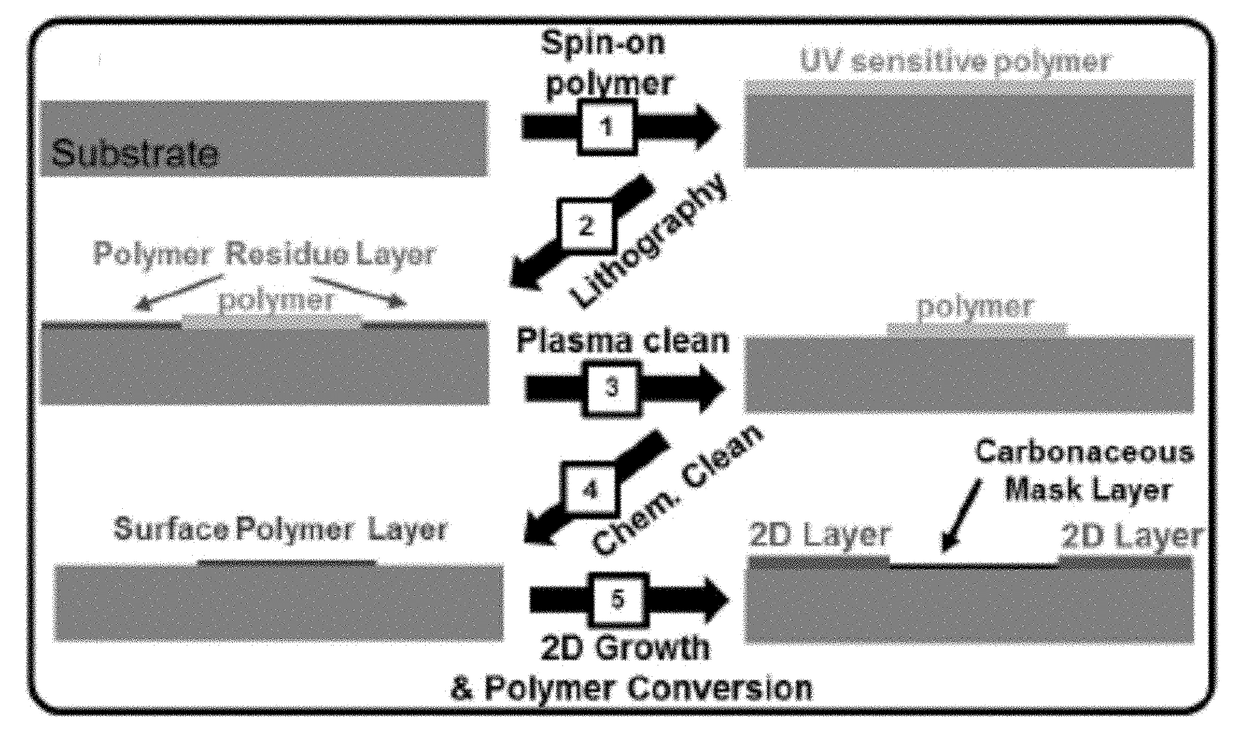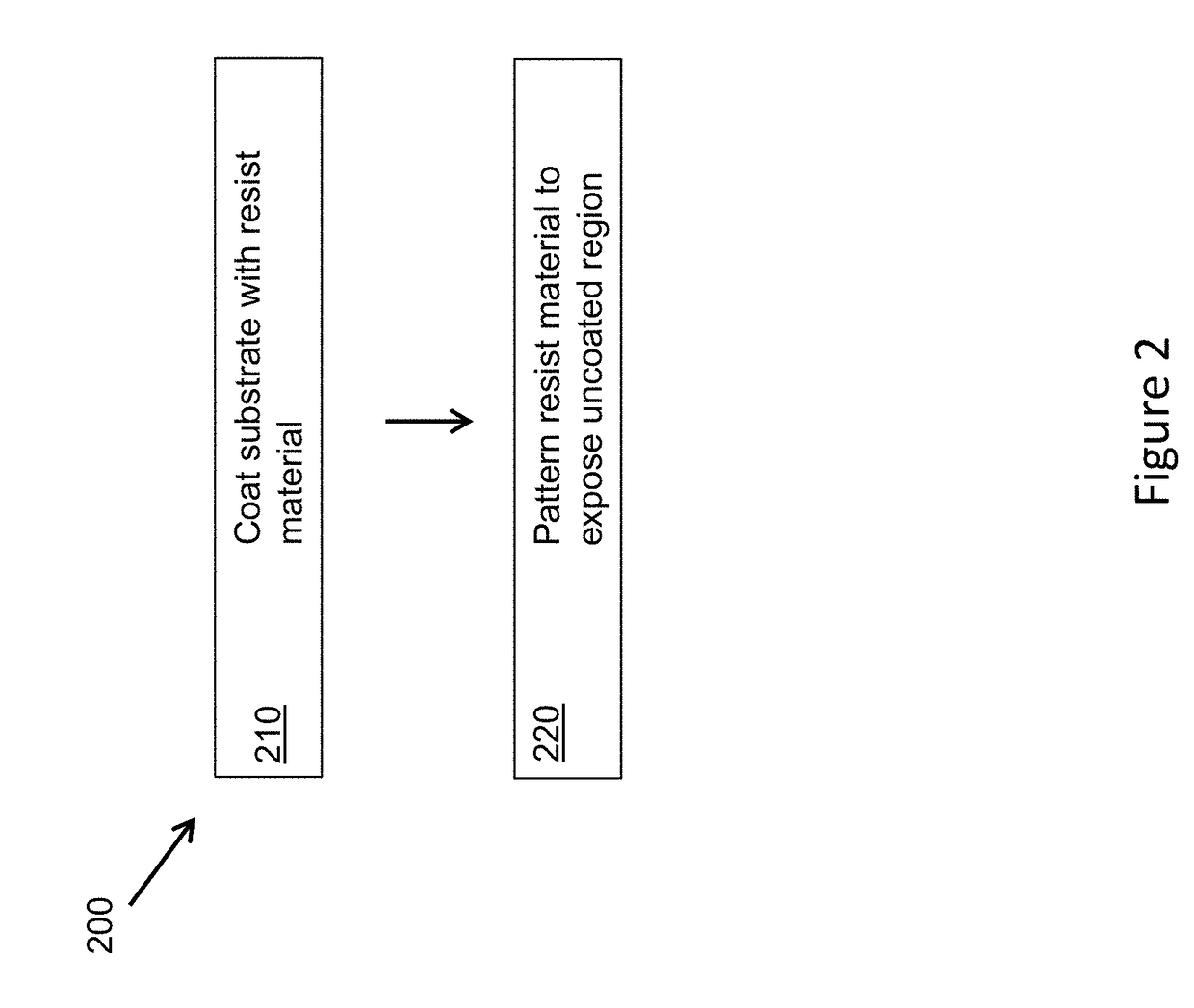Facile Route to Templated Growth of Two-Dimensional Layered Materials
a two-dimensional layered material and template technology, applied in vacuum evaporation coatings, chemical vapor deposition coatings, coatings, etc., can solve the problems of large pre- and post-growth fabrication requirements, and affecting growth quality
- Summary
- Abstract
- Description
- Claims
- Application Information
AI Technical Summary
Benefits of technology
Problems solved by technology
Method used
Image
Examples
experimental examples
[0073]The invention is further described in detail by reference to the following experimental examples. These examples are provided for purposes of illustration only, and are not intended to be limiting unless otherwise specified. Thus, the invention should in no way be construed as being limited to the following examples, but rather, should be construed to encompass any and all variations which become evident as a result of the teaching provided herein.
[0074]Without further description, it is believed that one of ordinary skill in the art may, using the preceding description and the following illustrative examples, make and utilize the compounds of the present invention and practice the claimed methods. The following working examples therefore, specifically point out the preferred embodiments of the present invention, and are not to be construed as limiting in any way the remainder of the disclosure.
example 1
ute to Templated Growth of Two-Dimensional and Layered Materials
[0075]Heterogeneous integration of layered materials has been predicted to lead to completely new electronic properties (FIG. 3), resulting in novel electronic material entirely different from the constituent layers. Developing routes for templated growth will significantly enhance the ability to tune the electronic properties of these 2D materials. In spite of the predicted extraordinary properties of 2D nanoribbons, bottom-up template synthesis processes have been quite limited. Described herein is a novel method for bottom-up template synthesis of 2D materials.
Roughening of Substrate Surface does not Allow for Selective Growth
[0076]It was hypothesized that roughening of a substrate surface will enhance nucleation and growth rate of the layered material in those regions where the roughness is increased, thereby providing a means to grow in pre-patterned areas. To test this hypothesis, it was determined if one could se...
example 2
Area Growth of Two-Dimensional Materials
[0087]The data presented herein demonstrates the ability to selectively synthesize TMDs via substrate surface functionalization. These data experimentally demonstrate the robust templated growth of various semiconducting TMDs via conventional lithographic techniques and experimentally evaluate the surface chemistries in order to understand the exact functionalization responsible for selected area growth control. Lastly, top-gated field effect transistors were successfully fabricated and measured on selectively-grown chemical vapor deposited monolayer molybdenum disulfide (MoS2) on sapphire substrates for the first time.
[0088]The materials and methods employed in these experiments are now described.
Substrate Patterning
[0089]Substrates are cleaned in a standard procedure by sonication in acetone and IPA solvents followed by Nanostrip etch (Piranha solution: sulfuric acid / hydrogen peroxide) for 30 mins at 90° C. to remove organic contaminants and...
PUM
| Property | Measurement | Unit |
|---|---|---|
| Structure | aaaaa | aaaaa |
Abstract
Description
Claims
Application Information
 Login to View More
Login to View More - R&D
- Intellectual Property
- Life Sciences
- Materials
- Tech Scout
- Unparalleled Data Quality
- Higher Quality Content
- 60% Fewer Hallucinations
Browse by: Latest US Patents, China's latest patents, Technical Efficacy Thesaurus, Application Domain, Technology Topic, Popular Technical Reports.
© 2025 PatSnap. All rights reserved.Legal|Privacy policy|Modern Slavery Act Transparency Statement|Sitemap|About US| Contact US: help@patsnap.com



